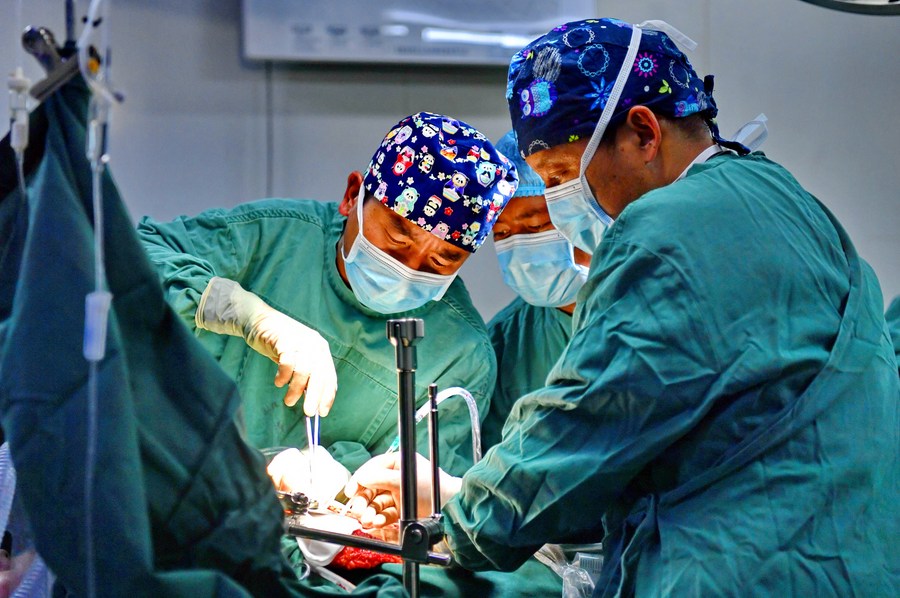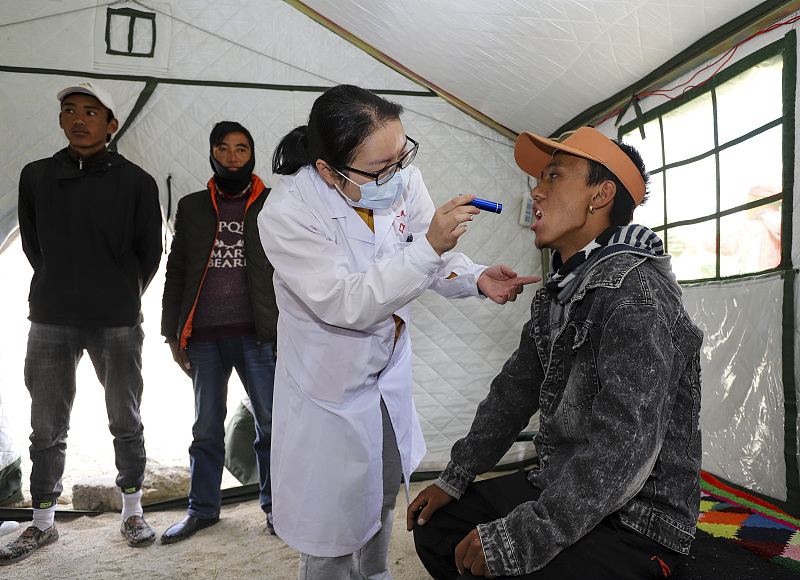
Doctors operate on a patient at Lhasa People's Hospital in Lhasa, capital of southwest China's Xizang Autonomous Region, December 31, 2020. /Xinhua
Doctors operate on a patient at Lhasa People's Hospital in Lhasa, capital of southwest China's Xizang Autonomous Region, December 31, 2020. /Xinhua
There have been no new cases of Kaschin-Beck disease (KBD), sometimes known as "big bone disease," in southwest China's Xizang Autonomous Region since 2018, and all 54 risk areas in the region have eliminated the endemic, local health authorities said on May 17.
Xizang currently has 3,866 KBD patients, all discovered before 2018, and 652 patients have undergone surgeries, according to a two-year special medical treatment campaign survey launched in 2021 for KBD patients.
Funds of some 35 million yuan (nearly $5 million) have been raised for treatment of the disease, and more than 3 million yuan of the funds have been used to support 1,630 KBD patients with heavy financial burdens in Xizang, according to the regional health commission.
Meanwhile, KBD has been included in the scope of special diseases in outpatient clinics, and the cost of its surgical treatment has also been reduced by new policies, basically realizing free medical treatment for KBD patients in the region, it said.
Besides the financial help, the pairing-up scheme, propping medical care in Xizang to a higher level, also helps KBD patients fight against the disease. The help and treatment of Xizang's KBD patients from the scheme's medical teams are result of a combination of multiple measures.

A doctor from the Shaanxi medical team to Xizang performs oral examinations for local people in Ngari Prefecture, southwest China's Xizang Autonomous Region, July 31, 2020.
A doctor from the Shaanxi medical team to Xizang performs oral examinations for local people in Ngari Prefecture, southwest China's Xizang Autonomous Region, July 31, 2020.
"In addition to bringing severe KBD patients to Tianjin for medical treatment, a team of experts will also be sent to Xizang's Qamdo City for medical help and treatment there," said Song Zhenqiang, head of Tianjin's ninth medical team to Xizang.
"At the same time, local doctors will also be trained with surgical skills, which can help build a medical team that can stay in the region when the aid teams leave," Song added, noting that "the medical experts from Tianjin will also track the patient's functional recovery situation after surgeries to ensure that the patient can return to live life to the maximum extent possible."
This is just one such case. From July 25 to August 13, 2022, five medical experts from Renmin Hospital of Wuhan University in Wuhan, central China's Hubei Province, rushed to Xizang and together with other members of the Hubei medical team to Xizang, treated 56 cases of severe KBD patients.
Since 2015, hospital departments in relatively developed municipalities and provinces in China have paired up with their counterparts in Xizang to provide better medical services to residents on the plateau.
By the end of June last year, seven batches of over 1,300 medical professionals from all over China have trained over 2,400 local doctors of different levels for Xizang. Meanwhile, hospitals in Xizang sent 1,800 local medical personnel to their paired provinces and municipalities for advanced training.
KBD is an endemic bone and joint disorder which is common among children and adolescents. Its clinical manifestations are painful, thickened and deformed limbs and joints and muscle atrophy. Severe patients tend to have short fingers, short limbs, and even an abnormally short stature or deformity, resulting in the loss of labor.